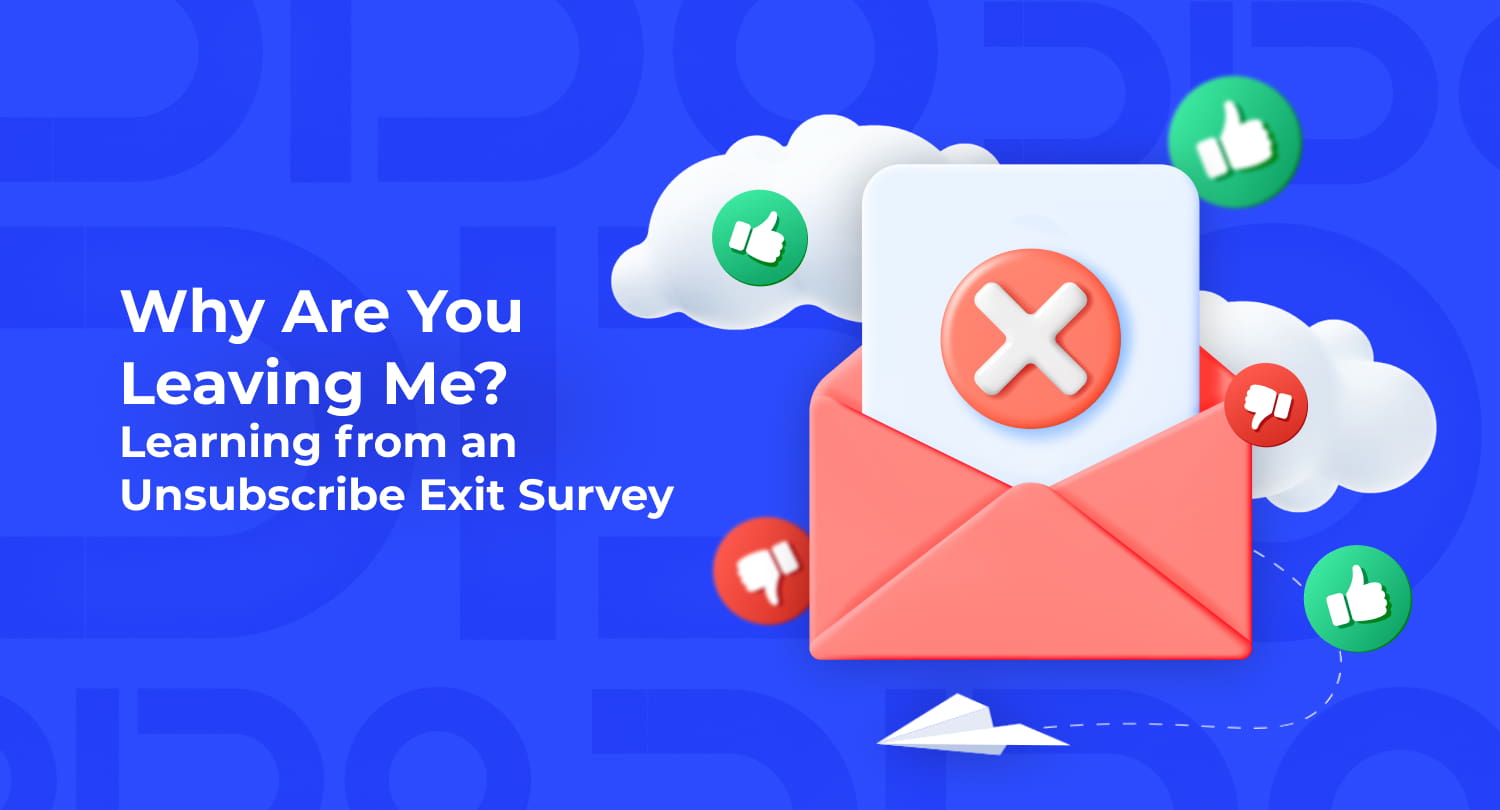When your relationship with one of your subscribers ends, sometimes the worst part is not knowing why it all went wrong. Thankfully, you can set up an optional exit interview to capture the reasons why someone is leaving after they unsubscribe. This is a neat way to turn an unfortunate situation into solid lessons for your future email sends.
Read on and let’s figure out why people may be unsubscribing from your emails and how you can use that information to improve future campaigns.
Why do people unsubscribe?
There are many reasons why people might unsubscribe from your email lists. Some reasons could include:
■ Irrelevant content
■ Repetitive content
■ Too many emails
■ Didn’t remember signing up
■ Privacy concerts
■ Emails are too sales-y
■ Suspected spam
…and more! People have different reasons for losing interest, and it’s not always personal.
Since we encourage all our customers to adhere to spam laws and always obtain permission to send emails, we’ll assume people aren’t unsubscribing because your emails are spam. Instead, we’ll focus on unsubscribe reasons including “Irrelevant Content,” “Too Many Emails,” and “Didn’t remember signing up” in our demonstration of how to create an exit survey. We’ll also include an “other” field for customers to fill in an alternative option.
Creating an exit survey
The first step in creating an exit survey is finding an app to host your survey on. Since we’re fond of the folks at Wufoo (as they integrate with us and are all-around nice people), we’ll use them in this example. However, you can choose any software to do the job.
Thanks to Wufoo’s field rules, you can create a text area that only appears if you select “I’ve got another reason.”
Now that your survey is complete, you can either embed it on your site or leave it as a standalone page that you link to.
What can I learn?
Once you notice that a few folks have unsubscribed and filled out the exit survey, it’s time to take a look at your results. Looking at the reasons why people unsubscribed can provide insight into how you can keep subscribers and maintain a more responsive list. Hopefully, you’ll be inspired to try something new (like autoresponders or A/B testing), send more segmented campaigns, or even reconsider your newsletter content.
Later down the road, these unsubscribe results can be used as a starting point for further surveys with your active subscribers to monitor whether changes you’ve made in your campaigns have resulted in fewer unsubscribers.
Unsubscribe page
Creating an unsubscribe confirmation page on your website is essential to giving your subscribers the freedom to unsubscribe.
You can control what the unsubscribe confirmation page looks like, which can be advantageous when attempting to artfully dissuade the customer from unsubscribing permanently. You can, for example, implore them to re-subscribe or take a break from newsletters and re-subscribe again at a later date. The details that you include on this page, especially in unsubscribe surveys, are crucial to retaining more subscribers and stemming the flow of lost subscribers.
Even though it’s important to have an unsubscribe page for customers who truly want to stop receiving newsletters, it’s also important to make sure you aren’t losing too many subscribers. You should always pay attention to the rate you’re losing subscribers and take appropriate action whenever there’s an alarming uptick. An unsubscribe rate that’s higher than 2% is cause for alarm, as that’s generally an ideal rate for most businesses.
The thing to avoid is sending unsubscribe confirmation emails. If the customer has requested to unsubscribe, they probably won’t welcome another email, even if all it does is confirm that they’ve unsubscribed.
Now that you know the basics of how to set up an unsubscribe email message, it’s important to think about why the customer unsubscribed in the first place. The customer’s unsubscribe reasons are an essential factor to examine in order to make your newsletters and overall content more effective.
Building better content is the key to retaining more subscribers. An unsubscribe survey is one of the best ways to find out how to do better. By analyzing the survey, you can learn more about what the customer didn’t like about your messaging and improve for the future.
Wrap up
You should always keep an eye on unsubscribe rates and make sure that they don’t exceed 2%. If it does, take action and be sure to put thought into your unsubscribe surveys, as they can give you the insights to help you retain other customers.
The quality of your unsubscribe email page can make a difference in increasing subscriber retention rates. The takeaway is not to think of an unsubscribe email message as an unsubscribe exit strategy, but rather as a method to improve your content for future customers.
